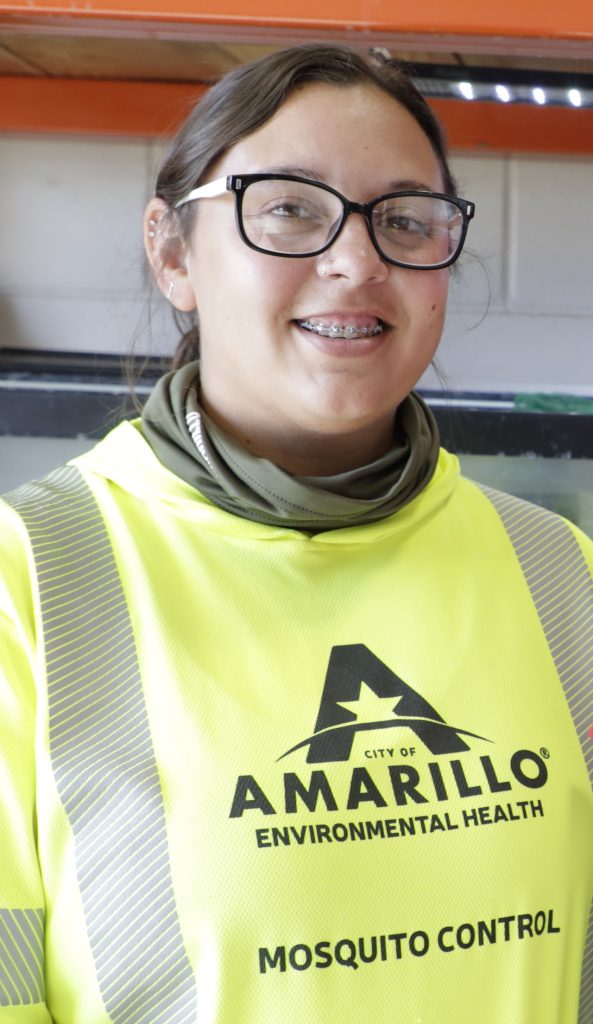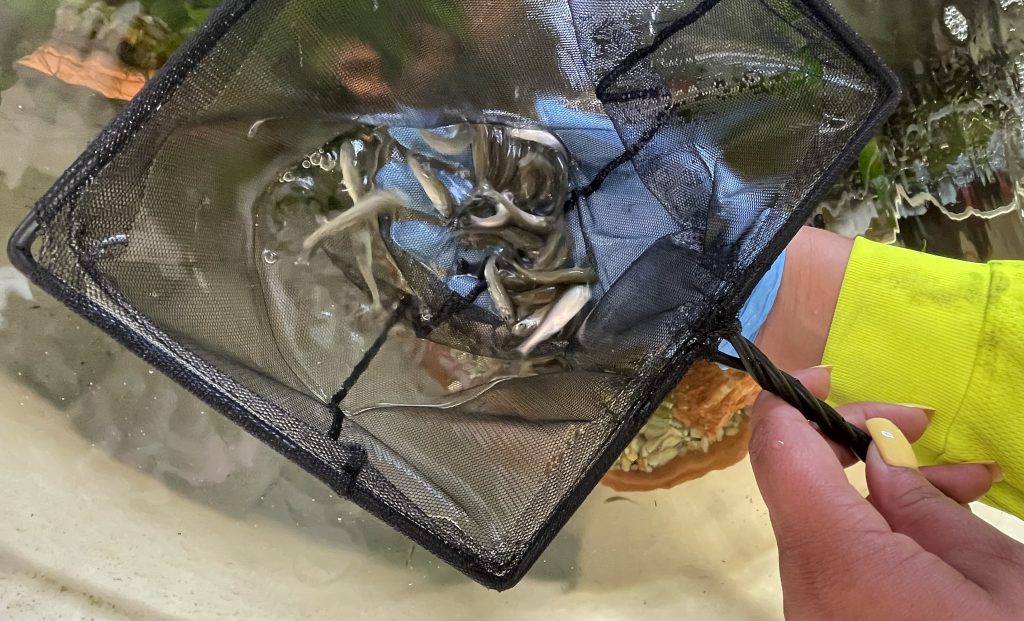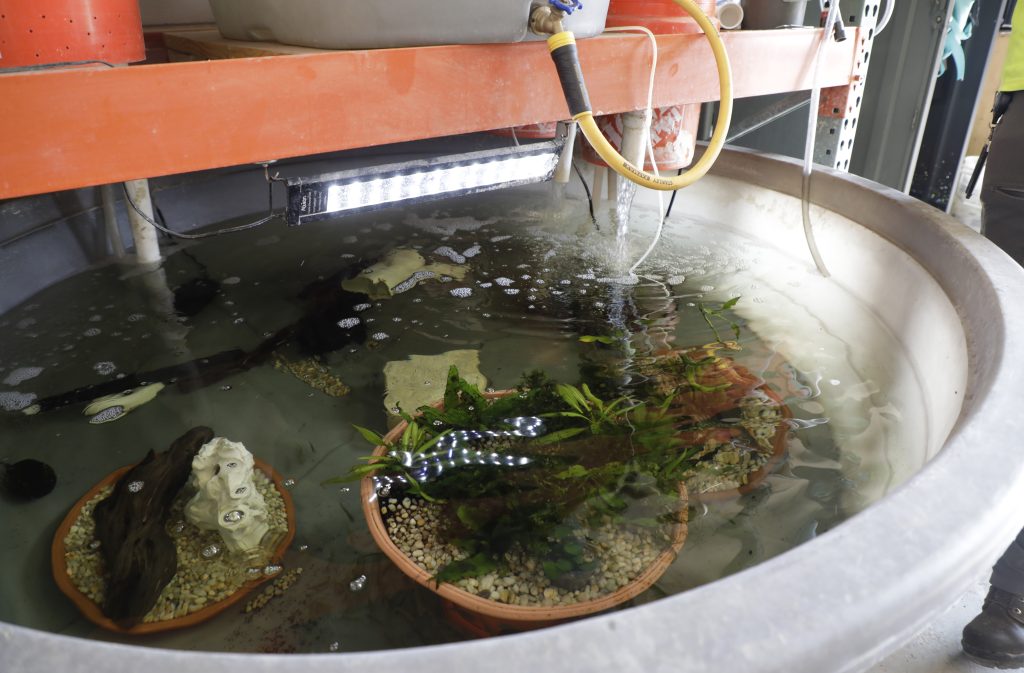COA Snapshot is a Monthly Feature on COA Employees
The City of Amarillo (COA) Environmental Health Department has found a unique partner in the fight against mosquitoes – Mother Nature. Or more specifically, fathead minnows.
A relatively wet summer for Amarillo has highlighted the presence of mosquitoes – which love to use standing bodies of water as a breeding ground for larvae.
Thanks to some creativity and ingenuity, the COA Environmental Health Department has found a natural ally against these pests, which can transmit serious illnesses such as West Nile virus to humans.
Enter the fathead minnow – a small fish measuring two to three inches and native to the Amarillo area. Fathead minnows love to dine on mosquito larvae – making the fish a useful resource to help reduce the mosquito population.
The COA Environmental Health Department began releasing fathead minnows in the field last year after researching a similar mosquito control program in Las Vegas. Fathead minnows have been released at four locations.
“We have seen favorable results,” said COA Deputy Environmental Health Director Zac Badrow. “(The fathead minnow) has become a resource for us for mosquito control.”
The city is only releasing fathead minnows on city property.
“We release them in evaporative ponds with street water runoff – things like that. Basically, where you see retention ponds that hold runoff water and are on city property,” Badrow said.
There are many positives about this unique program. Being a native species, fathead minnows are used to the sometimes-extreme Amarillo environment.
“The best part is the tradeoff on cost as far as taxpayer money,” Badrow said. “It is much cheaper to use these fish than it is chemicals. Chemicals are a biological control. With these fish, we are using a native species as a tool.”
The COA Environmental Health Department is not only using the fish as a natural weapon against mosquitoes, but also producing its own supply, breeding fathead minnows in small indoor tanks.
“The breeding process is not simple,” Badrow said. “We have finally got it where it mimics their natural habitat.”
COA Environmental Technician Cheyenne Housh, who is helping lead the program, sees potential for the future.
“I think one of our main goals in the future is to have residents of Amarillo be able to take home fathead minnows for use against mosquitoes on their own property,” Housh said. “That is certainly something we would like to able to provide to the community.”




